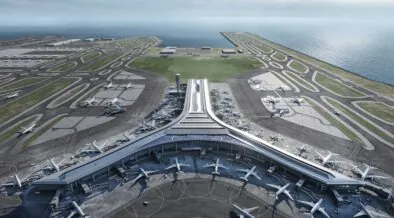
SpaceX Crew-9 Mission Successfully Docks at ISS, Welcomes Starliner Astronauts for Extended Stay
2024-09-29
In a significant development for the ongoing exploration of space, the SpaceX Crew Dragon capsule from the Crew-9 mission successfully docked at the International Space Station (ISS) on Sunday at approximately 5:30 p.m. ET. This marks an essential milestone as it facilitates the return of two Boeing Starliner astronauts who have been stranded on the station longer than initially planned.
NASA astronauts Suni Williams and Butch Wilmore, who initially launched aboard the Boeing Starliner spacecraft in June for a test mission, found themselves grounded due to a series of complications linked to their vehicle's systems. Problems, including helium leaks and malfunctioning thrusters, led NASA to determine that significant risks remained, preventing their return on the Starliner as planned. Consequently, the spacecraft returned to Earth empty on September 6.
As part of the Crew-9 mission, which experienced its own string of challenges, NASA astronaut Nick Hague and Russian cosmonaut Aleksandr Gorbunov made the journey to the ISS aboard the Crew Dragon, joining Williams and Wilmore for their extended stay. The Crew Dragon was selected as a safer alternative, and the two empty seats within the capsule have been preserved for Williams and Wilmore, enabling their return journey next year.
Scheduled for a greeting ceremony at around 7:30 p.m. ET, Hague and Gorbunov's arrival is set to be a warmly welcomed event, fostering camaraderie among the crew of the ISS. The SpaceX Crew Dragon capsule spent a mere day in transit before its successful docking, the culmination of a mission that kicked off with a launch from Cape Canaveral Space Force Station.
Despite a flawless launch initially, SpaceX disclosed that the upper stage of the Falcon 9 rocket encountered a deorbit burn anomaly and landed outside its intended target area in the ocean. The company is now conducting an in-depth investigation into the incident and has paused future Falcon 9 flights until the cause is understood.
The Crew-9 astronauts will remain aboard the ISS for about five months, taking on various research and operational tasks alongside the current crew, which includes NASA’s Don Pettit, and Russian cosmonauts Aleksey Ovchinin and Ivan Vagner, who arrived at the ISS on September 11.
NASA's decision to extend Williams and Wilmore's mission aligns with the agency’s broader plans for crew rotations and spacecraft availability. They are expected to remain in microgravity for several months longer than intended, providing valuable support to the ISS while expressing enthusiasm for their time in space. Williams has even referred to the microgravity environment as her “happy place.”
As America continues its advancements in space travel, this mission serves as a reminder of the risks involved, along with the extraordinary collaborations occurring among nations in support of scientific discovery and space exploration. Stay tuned as we follow the ongoing developments involving the next phases of NASA’s missions and the future of space travel!





 Brasil (PT)
Brasil (PT)
 Canada (EN)
Canada (EN)
 Chile (ES)
Chile (ES)
 España (ES)
España (ES)
 France (FR)
France (FR)
 Hong Kong (EN)
Hong Kong (EN)
 Italia (IT)
Italia (IT)
 日本 (JA)
日本 (JA)
 Magyarország (HU)
Magyarország (HU)
 Norge (NO)
Norge (NO)
 Polska (PL)
Polska (PL)
 Schweiz (DE)
Schweiz (DE)
 Singapore (EN)
Singapore (EN)
 Sverige (SV)
Sverige (SV)
 Suomi (FI)
Suomi (FI)
 Türkiye (TR)
Türkiye (TR)